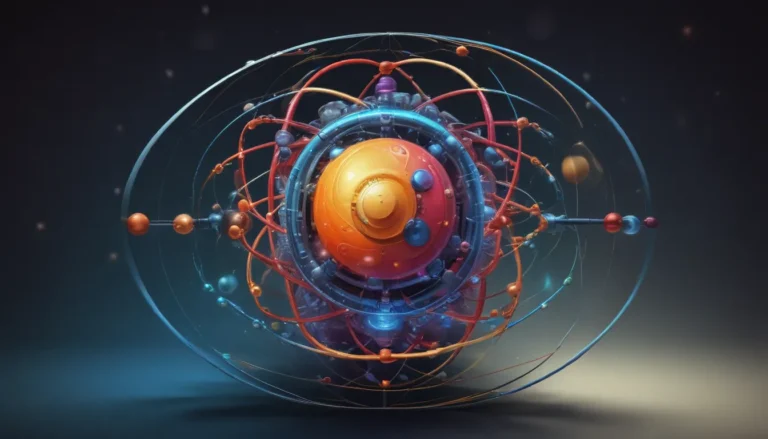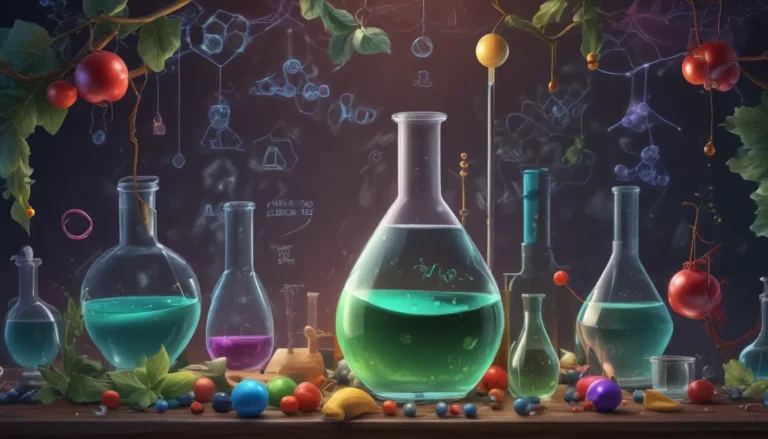A Note About Images: The images used in our articles are for illustration purposes only and may not exactly match the content. They are meant to engage readers, but the text should be relied upon for accurate information.
Have you ever wondered about the significance of parts per million (ppm) in the realms of chemistry, environmental science, and industry? The concept of ppm is a powerful tool that allows scientists to measure tiny quantities of substances in various solutions accurately. In this article, we will delve into 14 surprising facts about parts per million (ppm) that will expand your knowledge and appreciation of this essential measurement unit.
Unlocking the Mysteries of Parts Per Million (ppm)
Let’s embark on a journey to unravel the mysteries of ppm and discover how this measurement unit impacts our daily lives in numerous fields. From its origins to its practical applications, ppm is the key to understanding the composition and concentration of substances, enabling professionals to make well-informed decisions and assessments.
The Essence of Parts Per Million (ppm)
At its core, parts per million (ppm) is a unit of measurement that describes the concentration of a substance in a solution or mixture. It signifies one part of the substance for every million parts of the solution or mixture, providing a precise way to quantify minuscule amounts of substances.
The Magic of ppm in Chemistry
In the realm of chemistry, parts per million (ppm) holds immense significance. It serves as a vital measurement in diverse fields such as environmental science, analytical chemistry, and toxicology, allowing scientists to accurately determine the quantity of specific substances in a sample.
The Role of ppm in Environmental Monitoring
Part per million (ppm) is instrumental in environmental monitoring, where scientists utilize it to measure pollutants in the air, water, and soil. This information aids in assessing the environmental quality and identifying potential risks that may require remedial actions.
Ensuring Safe Drinking Water Through ppm Regulations
Regulatory bodies like the World Health Organization (WHO) establish limits for substances in drinking water, typically in parts per million. These regulations safeguard the safety and quality of drinking water, ensuring that it meets stringent standards for public consumption.
Safeguarding Food Safety with ppm Analysis
Ppm is a critical tool in ensuring food safety by detecting contaminants such as pesticides, heavy metals, and additives. By employing ppm measurements, food products undergo rigorous quality assessments to guarantee their safety and suitability for consumption.
The Precision of ppm Measurements
Ppm measurements are characterized by high levels of accuracy, especially when dealing with trace amounts of substances. This precision is crucial for monitoring trace elements or contaminants, allowing for meticulous analysis and detection.
Unveiling the Applications of Parts Per Million (ppm)
Dive deeper into the diverse applications of ppm in various industries and scientific endeavors to appreciate its versatility and importance in our modern world.
Monitoring Air Pollution Through ppm Analysis
Parts per million (ppm) is utilized to measure air pollutants like carbon monoxide, sulfur dioxide, and nitrogen oxides, enabling authorities to assess air quality and implement measures to reduce pollution levels for a healthier environment.
Combatting Global Warming with ppm Insights
By measuring carbon dioxide (CO2) concentration in parts per million, scientists gain valuable insights into the impact of greenhouse gases on global warming. Monitoring CO2 levels facilitates the evaluation of climate change trends and assists in formulating sustainable solutions.
Driving Quality in Industrial Processes with ppm
Industries rely on ppm measurements to maintain precise control over chemical concentrations and impurities during manufacturing processes. This stringent oversight ensures consistent product quality and mitigates potential risks associated with variations in concentration.
Enhancing Water Treatment Efficiency Through ppm Analysis
Ppm measurements are essential in water treatment facilities to evaluate the concentration of contaminants and verify the effectiveness of purification processes. This guarantees that treated water meets stringent safety standards for public consumption.
Ensuring Pharmaceutical Safety Through ppm Monitoring
In the pharmaceutical industry, ppm measurements are crucial for assessing the concentration of active ingredients, impurities, and contaminants in medications. This meticulous analysis safeguards the safety and efficacy of pharmaceutical products, ensuring consumer well-being.
Promoting Clean Air in the Automotive Industry with ppm Data
Automotive manufacturers utilize ppm measurements to monitor pollutant emissions from vehicles, including carbon monoxide, nitrogen oxides, and particulate matter. This data aids in developing cleaner and more fuel-efficient engines to reduce environmental impact.
Delving into ppm Analysis in Oil and Gas Exploration
Parts per million plays a pivotal role in the oil and gas industry by measuring impurities and contaminants in crude oil and natural gas. This information is indispensable for refining and processing operations, enhancing efficiency and ensuring product quality.
Unveiling Insights through ppm Chemical Analysis
Ppm measurements are extensively employed in analytical chemistry to quantify substance concentrations in various samples, providing crucial data for research, quality control, and product development. This analytical tool empowers researchers and scientists to delve deeper into the composition of substances.
Embracing the Versatility of Parts Per Million (ppm)
From environmental monitoring to industrial processes and scientific research, parts per million (ppm) serves as a versatile and indispensable unit of measurement. Its accuracy and precision enable professionals to assess concentrations with meticulous detail, leading to informed decision-making and assessments.
In Conclusion
In conclusion, parts per million (ppm) emerges as a critical concept with far-reaching implications across various disciplines and industries. By understanding the nuances of ppm, we gain valuable insights into substance concentrations and their impacts on the environment, safety, and product quality. Through this exploration of ppm’s applications and surprising facts, we elevate our appreciation for this essential measurement unit.
FAQs
Q: What does parts per million (ppm) signify?
A: Parts per million (ppm) represents the proportion of a particular substance in one million parts of a solution or mixture.
Q: How is ppm calculated?
A: To calculate ppm, divide the number of substance parts by the total solution or mixture parts, then multiply by one million.
Q: What are common examples of ppm measurement?
A: Ppm measurement examples include assessing pollutant concentrations in air or water, analyzing impurities in pharmaceuticals, and monitoring food and beverage quality.
Q: Can ppm be converted into alternative units of measurement?
A: Yes, ppm can be converted into units like milligrams per liter (mg/L) or micrograms per cubic meter (µg/m³) based on the substance being measured, using conversion factors.
Q: Why is ppm knowledge crucial?
A: Understanding ppm is vital for accurate substance concentration assessments, pivotal for environmental monitoring, quality control, and safety in diverse industries.
Q: How is ppm utilized in environmental science?
A: In environmental science, ppm is employed to measure pollutant concentrations in air, water, and soil, aiding in assessing environmental impacts and devising pollution control strategies.
Your Feedback
At our core, we are committed to delivering authentic and engaging content that inspires learning and exploration. Each fact on our platform is contributed by individuals like you, enriching our database with a myriad of insights and information. Our dedicated editors rigorously review each submission to uphold the highest standards of accuracy and credibility, ensuring that the facts we share are fascinating and reliable. Join us in our journey of discovery and learning as we continue to provide a platform for diverse perspectives and knowledge.






